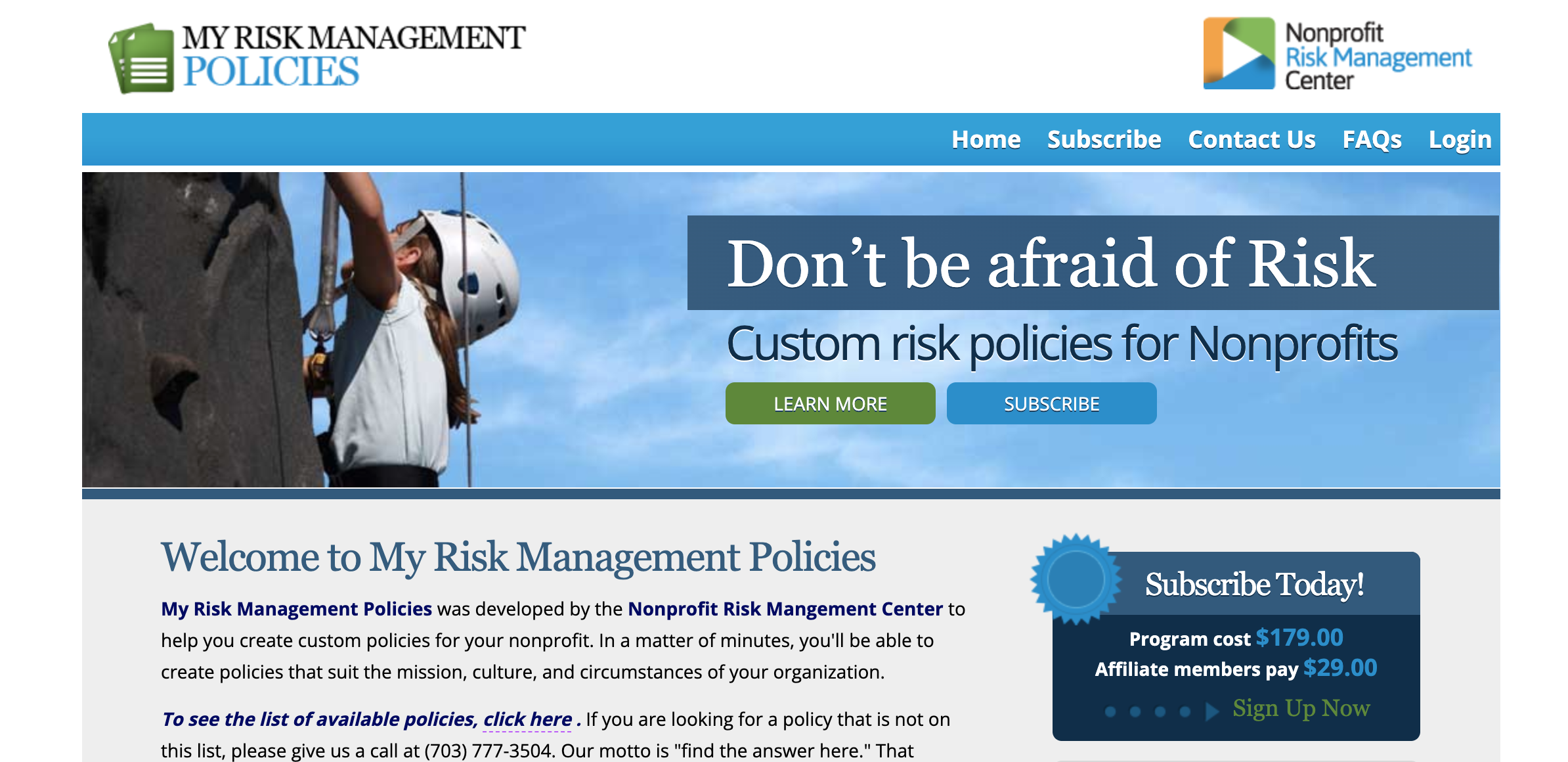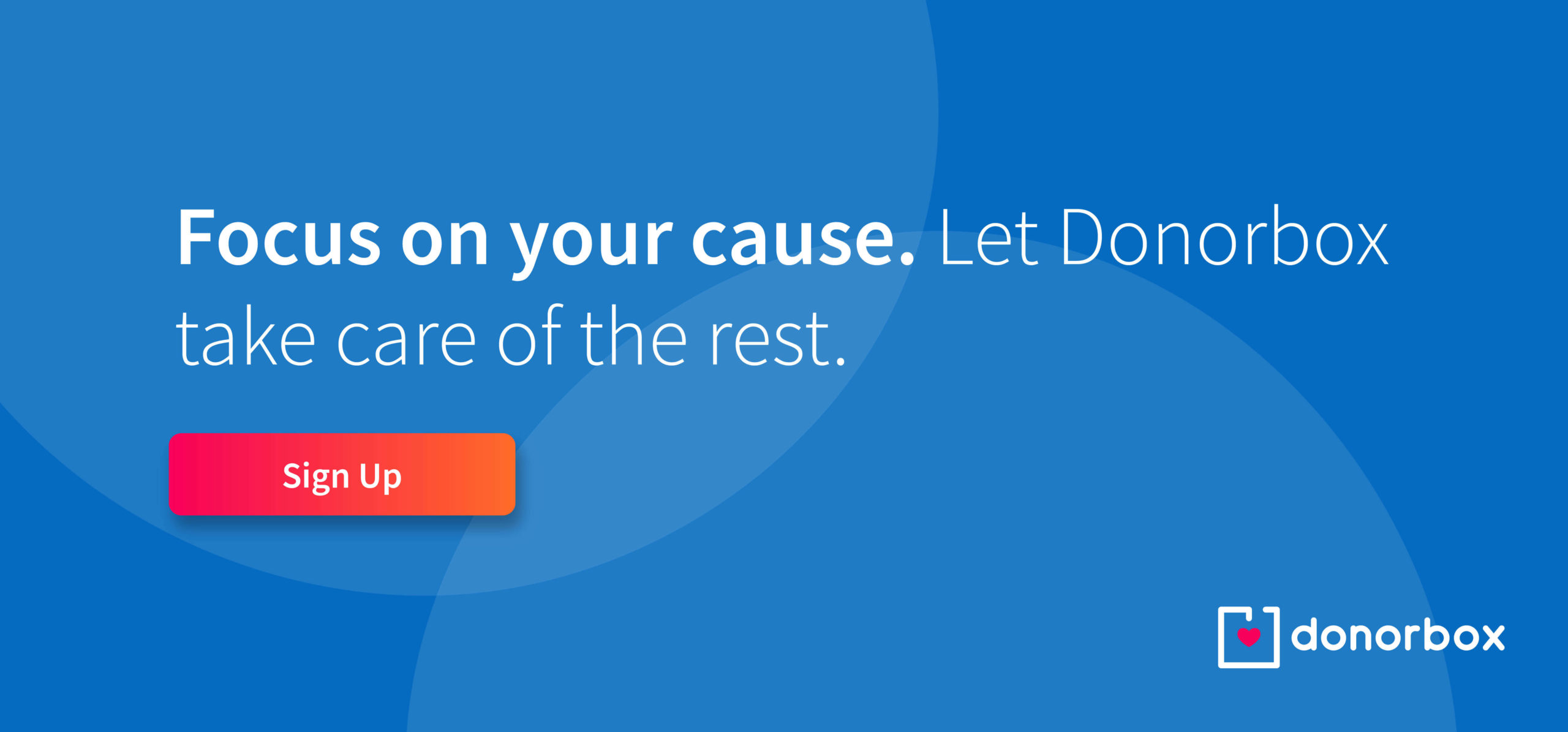Nonprofits are at more risk than other organizations because of the lack of finances and other legal restraints. A nonprofit risk management plan addresses potential external and internal risks that could take place.
This plan must cover each of these potential risks and provide a layout that’s easy to follow in the worst-case scenario. Luckily, there are several resources available to create these plans.
In this blog, we’ll dive more into what nonprofit risk management is and the tools you can use for your own nonprofit organization.
What is Risk Management for Nonprofits?
Nonprofits are held to higher standards than for-profit companies. This is true with the government, which has restrictions in place for nonprofits and donors who perform in-depth research before giving. It is also true in regard to donors, who prefer to give their hard-earned funds to a transparent and trustworthy organization.
A risk management plan gives nonprofits a path to follow to address potential threats and capitalize on opportunities. It ensures that your team knows what to do in a crisis.
Nonprofit Risks to Look Out For

Nonprofit risk management teams should create detailed plans for accidents, natural disasters, volunteer screening, and employee training. They should also find ways to reduce liability and ensure hardware and software are protected with cybersecurity.
There are several other financial risks where nonprofits have preparation. Many of these have a greater chance of happening and impacting the organization. The following risks could bankrupt an organization or threaten its trustworthiness in donors’ eyes.
Cybercrime
Unfortunately, nowadays, the threat of cybercrime is a real fear for individuals and companies alike. There have been several businesses built to address these issues, and the government has created regulations organizations must follow. If your nonprofit is attacked with a cybercrime, there are steps you can take, but what can you do to limit that threat?
Data insecurity is the largest risk for most nonprofits. Donorbox provides an extra layer of protection with several cyber security features, including:
- 24/7 automated fraud detection and monitoring
- Two-factor authentication to protect donor data
- SSL/TLS encrypted forms
- PCI compliance
- Increased access control during the use of integrations
Fundraising fraud
Growth in technology has helped nonprofits benefit from more external fundraisers and third-party organizations raising money. In most occasions, there is no downside to this type of relationship, but nonprofits must prepare in case of bad actors.
Third-party fundraisers use the organization’s name and reputation to collect donations. With in-person events, there is very little oversight and security available. Nonprofits must trust organizers to report and return all gifts they receive.
Organizations must determine when the benefits outweigh the risks for this type of fundraiser. Clearly define your nonprofit’s goals and communicate your organization’s expectations with all parties. Afterward, you’ll also want to make evaluations and recommend any updates to your risk management plan.
IRS regulatory compliance
Nonprofits cannot ignore the chance that staff and volunteers could make financial decisions or mistakes that could cost the organization. The government has strict laws and regulations that cover nonprofit organizations. Those who do not follow these laws can lose a nonprofit their coveted tax-exempt status.
Steps to creating a nonprofit risk plan
Open communication, clarification, and segregation are all necessary when developing risk plans. When creating risk management plans for cybersecurity, governance, third-party fundraising, accident, employee, and volunteer training, there are several steps you’ll want to follow, including:
- Identify and define each risk – Determine whether it’s internal or external, how it will affect your organization, or if it’s connected to other issues
- Prioritize – Rate each risk from rare to certain and determine how significant the impact it will have on your organization if it occurs
- Assign an owner or team – Create a diverse team to develop plans. Ensure team members are qualified to address the issue.
- Evaluate the tools you have – Look into potential software, risk management practices, liability insurance, and consultants
- Discuss legal implications – Reach out to a lawyer to better understand your choices
- Set payment controls – Include a budget, purchase orders, invoices, secondary approval, and automatic checks
- Monitor and Review – Assign a plan manager to continuously monitor risks, review the plan, and make adjustments as needed
6 Risk Management Tools and Resources
As you develop your nonprofit risk management plan, you may want support from a professional. Whether your nonprofit is part of the health or other high-standardized industry, or a small organization, the following tools and resources can help you get started.

My Risk Management Policies was developed by the Nonprofit Risk Management Center to help nonprofits create customized risk management policies. Organizations can create detailed plans to match their specific needs. The policies available include:
- Anti-bullying
- Benefits
- Board Exit Interview
- Visitors Policy
- Volunteer Orientation
- Gift Policy
This tool is highly affordable at $179 for all, or $29 for Affiliate Members.
Hyperproof
Hyperproof helps organizations demonstrate their commitment to upholding laws, standards, and ethical conduct to the public. This tool provides links and support to integrate various regulations and laws like HIPAA and ISO/IEC. They also:
- Offer templates
- Help organizations prepare for audits
- Assess and manage risk
No pricing is available on their website, but you can sign up for a demo.
Ostendio
Ostendio is an integrated security and risk management platform that works with for-profit and nonprofit organizations. This tool helps organizations assess risk, create and manage policies, educate their team, and monitor the outcomes.
A few risk management features that stand out with this tool include:
- Risk assessment audits
- Data security alerts and notifications
- Vendor management
Ostendio offers Premium, Premium Plus, and Enterprise packages. They don’t list prices on their website, but you can contact them for more details.
Nonprofit Risk Management Center
Nonprofit Risk Management Center provides free and affordable resources for nonprofits. Their Resource Library includes apps, articles, books, and a link to other risk management essentials.
You can join their membership plan and gain access to their entire webinar vault, receive invitations to events, and get discounts on their products. Memberships for nonprofits are $900 annually or $75 a month.
Candid
Candid provides knowledge-based articles on risk management for nonprofits. Some of the links available include:
- Volunteer Screening
- Developing a Disaster Plan
- Purchasing insurance for your directors
Candid is a free knowledge resource.
Risk Alternatives
Risk Alternatives is a consultation service that trains and supports nonprofit risk management. They work with organizations to identify their risks and build a culture of improvement.
They do not provide prices on their website, but nonprofits can download a free fact sheet and schedule a strategy session.
Final Thoughts
In conclusion, nonprofit risk management is required for many industries, but smaller organizations may not see the need until too late. We hope this article explains why you can’t ignore risk management preparedness and helps you find free and affordable resources to get you started.
One of the best ways to mitigate fundraising fraud and other similar risks is by signing up for fundraising software you can trust, like Donorbox! Our top-notch security efforts ensure that your donation data and donor information stay secure, and you don’t have to worry about a thing!
We have several more free resources to help nonprofits with fundraising, management, and more. Sign up to receive weekly articles sent to your email. If you’re looking for an affordable online fundraising tool, visit our website for more.






